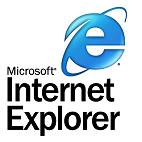Г. В. Царева
 Скачать 1.52 Mb. Скачать 1.52 Mb.
|
INTERNET EXPLORER HISTORY
6. Give synonyms to the following words from the text: Beginning, main, answer, additional peripheral, available, huge, characteristic, at once, to attract smb., help, to develop, to announce, before, to be used to, to make better, to achieve, to appear, to face, former, to supply. 7. Sum up the information given about each Internet Explorer and express it in one sentence. 8. Using the following expressions write the annotation to the text: The text deals with ____ As the title implies the text describes ____It is specially noted ____ A mention should be made ____ It is spoken in detail ____ The text gives valuable information about ____ The text is of great help to ____ It gives a detailed analysis of ____ It draws reader’s attention to ____ ____ is (are) proposed. ____ is (are)examined. ____ is (are)discussed. L  ISTENING SKILLS ISTENING SKILLS1. Listen to the interview with David Collins, the president of Videotex Link. He is explaining videotex system to a journalist. Complete the journalist’s notes. Videotex: interactive system of information. Allows anybody with a telephone and appropriate equipment to access a wide range of services. - Need a ____ to be connected to a videotex network. - To install a modem one cable of modem is connected to ____ and the other to ____. - Public videotex system in Europe: New Prestel in the UK. Teletel in France. Ibertex in ____. Videotel in ____. - Specialized services offered by the French Minitel system: ____. - Information services provided by videotex: current affairs, entertainment, ____. 2. Listen to the interview with Tom Bryant, a writer with a computer magazine. Are the following sentences true or false? A pen-based interface uses an electronic stylus as an input device. Pen computers do not require specialized operating systems to recognize pen gestures and characters. Pen computers come with operating systems that can be trained to recognize handwriting. Some pen computers are more powerful than desktop PCs. A Personal Digital Assistant is a hand-held pen computer designed to organize and communicate personal information. You cannot transmit data from pen computers to desktop PCs and peripherals. Business people will make up a large section of the pen computer market. 3. Read this extract from the interview and fill in the missing words. The first letters of each missing word is given. Interviewer: Can you explain how a (1) p____ computer work? Tom Bryant: Sure. A pen computer usually (2) r____ on rechargeable alkaline batteries. You hold the computer with one hand and with the other you use an electronic (3) s____ to write, draw and make selections on a flat LCD (4) s____ Interviewer: That means it doesn’t have a keyboard. Tom Bryant: That’s right. You write (5) i____ with the stylus like a pen. Interviewer: And how does the computer (6) r____ what you write? Tom Bryant: It reads the (7) p____ of the pen and sends signals to the screen. The computer then translates the movements of the pen into characters or performs the functions like “delete”. The operating system recognizes specific gestures. D  ISCUSSION ISCUSSIONWorking in pairs make up dialogues discussing the following problems. You friend has just bought a computer and he is in doubt whether to use the Internet or not. Describe him pros and cons of this global net. One of you is going to send a letter to your friend using the post office. The task of the other student to advise him to use the e-mail. Can we balance the use of technology and real-life conversation? How?  WRITING Study the letter of enquiry and the following questions. Write your own letter following the questions. Use appropriate style and language. THE JAMESON CONSTRUCTION CO. PTY. Harbour Road MELBOURNE, AUSTRALIA 25 June 2020 The Aluminium Alloy Co. Ltd. 79 Prince Albcn St. Birmingham B21 8DJ Great Britain Dear Sirs We have seen your advertisement in The Metal Worker, and would be grateful if you would kindly send us details of your aluminium fittings. Please quote us for the supply of the items listed on the enclosed enquiry form, giving your prices c.i.f. Melbourne. Will you please also indicate delivery limes, your terms of payment, and details of discounts for regular purchases and large orders. Our annual requirements for metal fittings are considerable, and we may be able to place substantial orders with you if your prices are competitive and your deliveries prompt. We look forward to receiving your quotation. Yours faithfully THE JAMESON CONSTRUCTION CO. PTV.  H. Smilhers Buyer Do you have a catalogue for your products? Can you send it to us? What are your delivery times? What are your usual terms of payment? Do you offer any discount for regular purchases? S  UPPLEMENTARY READING UPPLEMENTARY READINGTHE LANGUAGE OF E-MAIL E- mail is the simplest and most immediate function of the Internet for many people. Run through a list of questions that new e-mail users ask most and some snappy answers to them. What is electronic mail? E-mail, as it’s normally shortened to, is just a message that is composed, sent or read electronically (hence the name). With regular mail you write your message (letter etc) and drop it off at the post office. The postal service then delivers the message and the recipient reads it. E-mail operates basically the same-way except that everything happens electronically. You compose your message using e-mail software, send it over the lines that connect the Internet’s networks and the recipient uses an e-mail program to read the message. How does e-mail know how to get where it’s going? Everybody who’s connected to the Internet is assigned a unique e-mail address. In a way, this address is very like the address of your house or apartment because it tells everyone else your exact location on the Net. So anyone who wants to send you an e-mail message just tells the e-mail program the appropriate address and runs the Send command. The Internet takes over from there and makes sure the missive arrives safely. What’s this netiquette stuff I keep hearing about? The Net is a huge, unwieldy mass with no “powers-that-be” that can dictate content or standards. This is, for the most part, a good thing because it means there’s no censorship and no one can wield authority arbitrarily. To prevent this organized chaos from descending into mere anarchy, however, a set of guidelines has been put together over the years. These guidelines are known collectively as netiquette (network etiquette) and they offer suggestions on the correct way to interact with the Internet denizens. To give you the taste of netiquette, here are some highlights to consider. Keep your message brief and to the point and make sure you clear up any spelling slips or grammatical gaffes before shopping it out. Make sure the Subject lines of your message are detailed enough so they explain what your message is all about. Don’t SHOUT by writing your missive entirely in uppercase letters. Don’t bother other people by sending them test message. If you must test a program, send a message to yourself. What’s a flame? The vast majority of e-mail correspondence is civil and courteous, but with millions of participants all over the world, it’s inevitable that some folks will rub each other the wrong way. When this happens, the combatants may exchange emotionally charge, caustic, often obscene messages called flames. When enough of these messages exchange hands, an out-and-out flame war develops. These usually burn themselves out after a while, and then the participants can get back to more interesting things. Is e-mail secure? In a word no. The Net’s open architecture allows programmers to write interesting and useful new Internet services, but it also allows unscrupulous snoops to lurk where they don’t belong. In particular, the e-mail has two problems: it’s not that hard for someone else to read your e-mail, and it’s fairly easy to forge an e-mail address. If security is a must for you, then you’ll want to create an industrial strength password for your home directory, use encryption for your most sensitive messages, and use an anonymous remailer when you want to send something incognito.  FINAL TEST 1. Find and match the pairs of expressions from the left and right columns that have the same meaning.
2. Choosethesentenceswhicharetruetotheinformationofthe introductorytext. Terminals of data communications system share the same software and hardware. Data communications over long distances can’t make use of microwave radio links. A graphics terminal is usually used for Computer-Aided Design. Telephone lines carry digital signals. Dish aerials are usually situated at the top of high towers. Any terminal has one input device and output device. 3. The main idea of the text “Internet ExplorerHistory” can be expressed as: The development of Internet Explorers has a long history. The development of Internet Explorers made Internet more accessible for many people. The development of Internet Explorers makes Internet more accessible and their new versions open more and more abilities for Internet users. 4. Give the right Russian equivalent to the following English word combinations.
5. Give the right English equivalent to the following Russian word combinations. акустический коммутатор однокабельная сеть графический терминал световое перо дистанционный доступ 6. Complete the sentences with the proper word. LAN stands for ____. ____ converts analogue signals into digital signals and vice versa. Computers make use of ____ signals. Windows 95 with Internet Explorer 1.0 debuted in ____. Internet Explorer 6 technology was released in 2001 with ____. 7. Find the equivalents in two languages.
8. Choose the right variant. 1. ____ gives computer user the opportunity to send a message to somebody without leaving home. A. Aerial B. E-mailC. Modem D. Display 2. A special kind of modem with rubber cups is known as ____. A. Acoustic coupler B. Demodulator C. Modulator D. Fibre-optic cable 3. A network contained in a relatively small area is known as ____. A. WAN B. Loop network C. LAN D. Single cable network UNIT IX |

 ame for a set of technologies.
ame for a set of technologies.